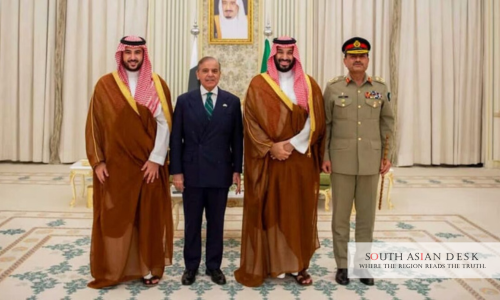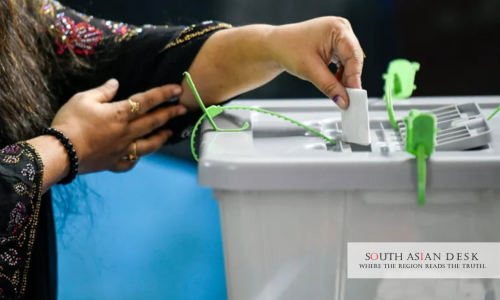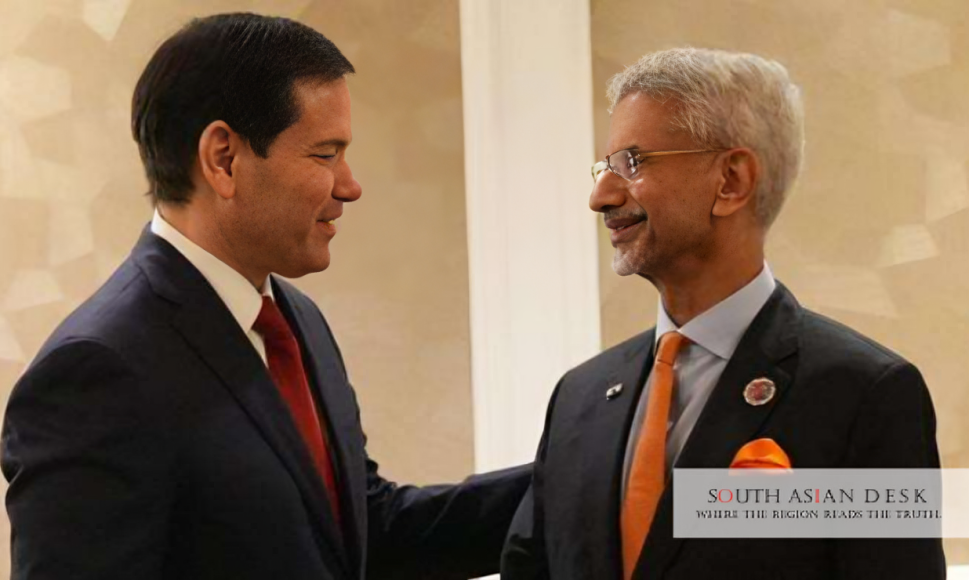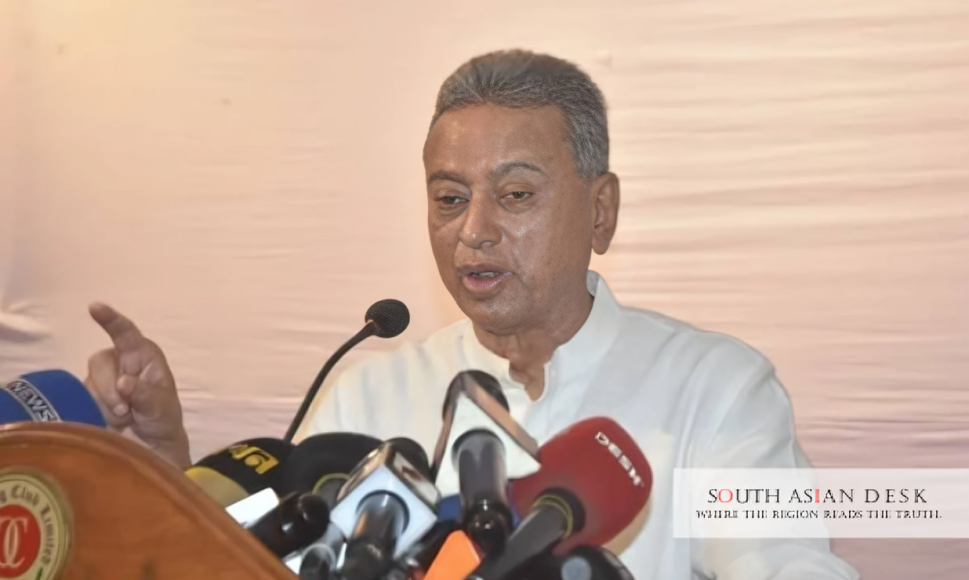A fresh Saudi Pak pact potential financial lifelines for Islamabad, but persistent debt woes temper optimism for lasting stability.
ISLAMABAD: On Tuesday, September 17, 2025, Pakistan and Saudi Arabia inked a strategic mutual defence pact in Riyadh during Prime Minister Muhammad Shehbaz Sharif’s state visit, aiming to deepen security ties while paving the way for economic relief and enhanced stability amid Pakistan’s ballooning debt crisis. The agreement, witnessed by Crown Prince Mohammed bin Salman, underscores Riyadh’s commitment to Islamabad’s fiscal challenges, including rollovers of $3 billion in deposits and accelerated $5 billion investments in energy and infrastructure.
Why It Matters
In South Asia’s interconnected economic landscape, the Saudi Pak pact represents a critical buffer against regional volatility, where Pakistan’s stability directly impacts trade corridors, remittances, and counter-terrorism efforts. With neighbours like India eyeing border security and Afghanistan grappling with spillovers, Riyadh’s support could prevent a domino effect of financial contagion, fostering broader Gulf-South Asia partnerships for sustainable growth.
Saudi Pak Pact: A Dual Focus on Defence and Debt Relief
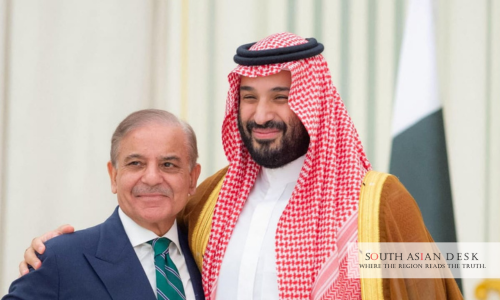
The Saudi Pak pact emerged from high-level talks hosted by Saudi Crown Prince Mohammed bin Salman, where Sharif emphasised mutual security interests alongside economic imperatives. Foreign Office spokesperson Shafqat Ali Khan detailed in a press briefing on Friday, September 19, 2025: “This agreement reflects the shared commitment of both nations to enhance their security and to achieving security and peace in the region and the world.” Beyond defence, the pact facilitates immediate financial relief through the rollover of Saudi Arabia’s $3 billion deposit with the State Bank of Pakistan, vital for averting a sovereign default as external debt servicing demands hit $26 billion this fiscal year.
Pakistan’s public debt surged to PKR 88.126 trillion ($312 billion) by June 2025, up PKR 9.44 trillion from the previous year, with external obligations at PKR 23.417 trillion ($83 billion). Nearly 47% of the federal budget—PKR 8.2 trillion—now services interest payments, squeezing funds for development. The Saudi Pak pact addresses this by fast-tracking a $5 billion investment package, originally pledged but delayed, targeting energy, mining, and infrastructure to curb import reliance and boost exports. Historical precedents include Saudi Arabia’s $3 billion central bank deposit and $1.2 billion in deferred oil payments, which previously staved off collapse.
Remittances from 3 million Pakistani workers in Saudi Arabia exceed $9 billion annually, and the pact may expand opportunities in specialised security roles, further bolstering inflows. Officials note that early repayments of PKR 2.6 trillion have mitigated some refinancing risks, while a primary surplus of 2.4% of GDP marks fiscal progress. Yet, the debt-to-GDP ratio, though down to 70% in FY25 from 74% in FY22, remains precarious, with forex reserves below $20 billion insufficient for $26 billion in outflows.
Navigating Relief Amid Stability Challenges
Under an H2 heading incorporating the Saudi Pak pact, discussions on relief measures highlighted Riyadh’s role in Pakistan’s IMF programme. The International Monetary Fund (IMF) completed its first review of the $7 billion Extended Fund Facility (EFF) on Friday, May 9, 2025, disbursing $1 billion and approving a $1.4 billion Resilience and Sustainability Facility for climate risks. IMF Mission Chief Nathan Porter affirmed: “Pakistan’s policy efforts under the programme have already delivered significant progress in stabilizing the economy and rebuilding confidence.” Saudi Arabia’s assurances, alongside those from China and the UAE, were pivotal, including firm commitments for $1 billion in additional financing over the next 12 months.
The pact’s economic arm promises longer-term stability by reviving Saudi investments in Pakistan’s refinery sector, potentially slashing costly petroleum imports. Geopolitical alignment could attract further Gulf capital, such as corporate farming for Saudi food security, enhancing Pakistan’s export base. However, experts caution that over-reliance on rollovers erodes sovereignty, with conditions often mirroring IMF demands like tariff hikes and subsidy cuts. Inflation dipped to a historic low of 0.3% in April 2025, enabling a 1,100 basis points policy rate cut since June, but vulnerabilities persist.
Background
Pakistan’s economic travails trace back decades, with 25 IMF programmes since 1958 amid chronic imbalances. The latest crisis intensified post-2022 floods and political turmoil, depleting reserves to cover barely a month’s imports. Saudi Arabia has been a steadfast ally, depositing $2 billion in July 2023 ahead of a $3 billion IMF bailout and renewing $3 billion in December 2024. The September 2025 Saudi Pak pact builds on July 23, 2025, agreements to advance investments, discussed by Deputy Prime Minister Ishaq Dar and Saudi Minister Faisal Fadhil Al-Ibrahim during Pakistan’s UN Security Council presidency.
Broader bilateral ties include March 23, 2024, loan agreements for hydropower via the Saudi Fund for Development, and a December 3, 2024, commitment to transform economic cooperation. Yet, execution lags—past Saudi projects faced delays due to Pakistan’s investment climate. The pact also opens defence export avenues, from personal equipment to unmanned aerial vehicles, aligning with Riyadh’s diversification under Vision 2030.
IMF Ties and Future Relief Pathways
The Saudi Pak pact intersects with IMF reforms, where Pakistan achieved a primary surplus of 2.0% of GDP in the first half of FY25, on track for 2.1%. Provinces are harmonising agricultural income taxes effective January 1, 2025, while broadening the tax base ends exemptions equating to debt servicing needs. Still, indirect taxes burden citizens, fuelling protests over high electricity rates.
Challenges include non-performing loans at historic lows but rising external borrowings by banks, with liquidity ratios straining. The pact’s relief could diversify funding, reducing IMF dependency that constrains foreign policy. Critics highlight risks: benefits hinge on reforms like privatising loss-making enterprises and efficient water pricing for climate resilience.
In a concluding reflection, the Saudi Pak pact offers a beacon of relief and stability, yet its success demands rigorous implementation to break Pakistan’s debt cycle and secure enduring economic resilience.
Published in SouthAsianDesk, September 22nd, 2025
Follow SouthAsianDesk on X, Instagram, and Facebook for insights on business and current affairs from across South Asia.


